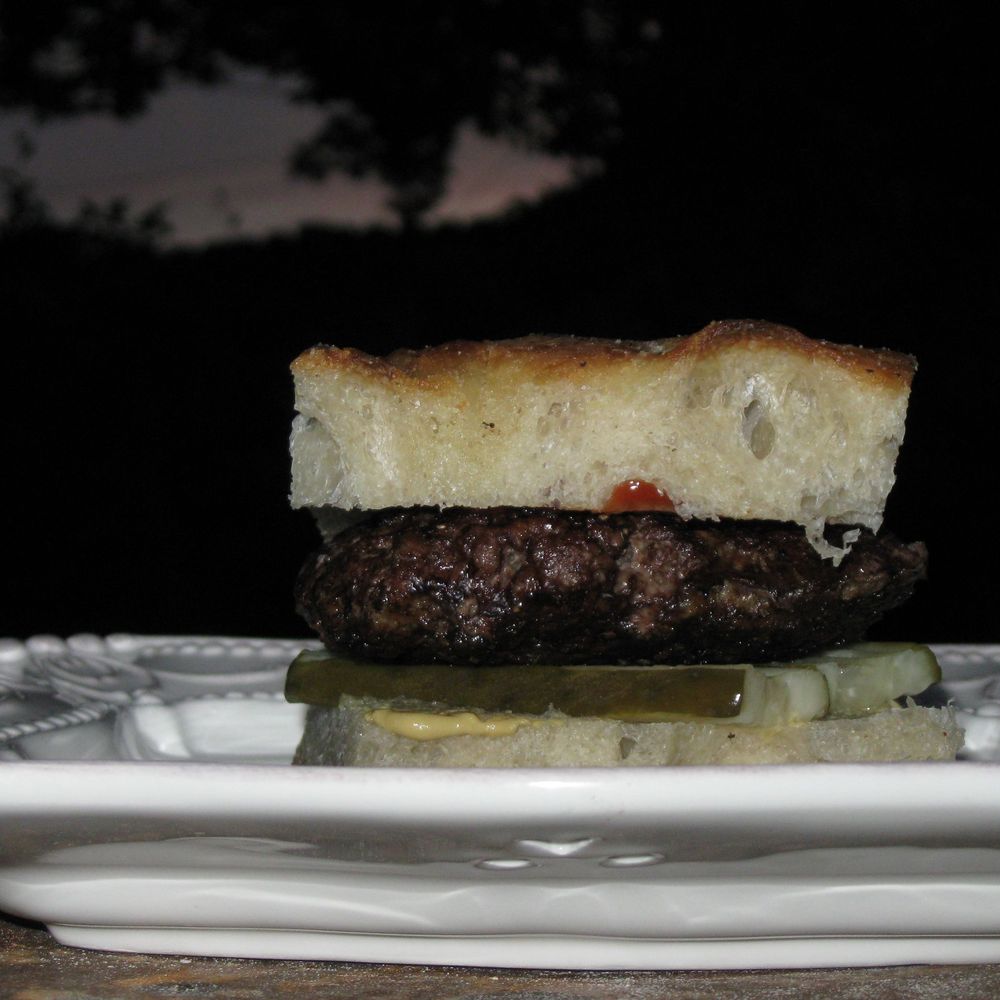Focaccia

A note on the photos and references to them. For some reason, their order changes every time I add a new one. That they were never stored in sequential order in the first place only makes things more exciting. I have an email in to food52's resident geniuses, and until I hear back, I apologize for inaccuracies on photo references.
<br />
<br />
<br />In the early part of the 10 or so years I've been making this bread, I adjusted this and that here and there, determined to get it to the point of being foolproof. I finally did; this dough simply "works". Nothing tricky about it. Not that there aren't a couple of important tricks to remember.
<br />
<br />If you're about to feel daunted by the three days required to make it, calm down and please read on. The actual time you spend actively doing much to it is pretty minimal. The yeast and flour are going to do more work than you will. The job of the poolish is to take a minuscule amount of yeast and grow it into a population that will go into the final dough and begin growing another population. The same will occur during the final overnight proofing once the bread has been shaped. Well why not just use more yeast in the first place and be done in a day, you're thinking about now. Because the great character that true focaccia has develops over timefr with the additional bacterial activity which takes place during those long, slow proofings. The great benefit of having some patience is that in the end, you'll have a world-class slab of bread.
<br />
<br />Focaccia is a sticky dough, and you'll need to make peace with that. It's sticky because it has a much higher level of hydration than conventional one-day doughs. Those tiny amounts of yeast require more water with which to reproduce. As well, the greater amount of water encourages the additional bacterial activity which contribute to the bread's wonderful character and flavor.
<br />
<br />The water is also partially responsible for the near magical open, irregular crumb. When the dough hits the high heat of the oven (425 degrees), it turns to steam. It is retained inside the dough as it expands, being a gas, by the strong gluten you are going to develop as you knead the dough.
<br />
<br />You might want to make the focaccia as is at first before you start adding ingredients to the dough. Kalamata olives, sun-dried tomatoes, fresh herbs, toasted nuts, etc. are all wonderful, but they do change the texture of the dough, so best perhaps to get comfortable to begin with. Toppings? By all means. Fresh herbs, sliced tomatoes, sliced onions, cheeses, nuts, and so on, are wonderful. Be sure to wait until the last to minutes or so of the bake time to add them, then quickly return the bread to the oven. As I mentioned, it's baked at 425 degrees, and toppings added at the begin tend to incinerate, for lack of a better term, by the time the bread is done. And that would be so sad.
<br />
<br />
0
8
0

Comments